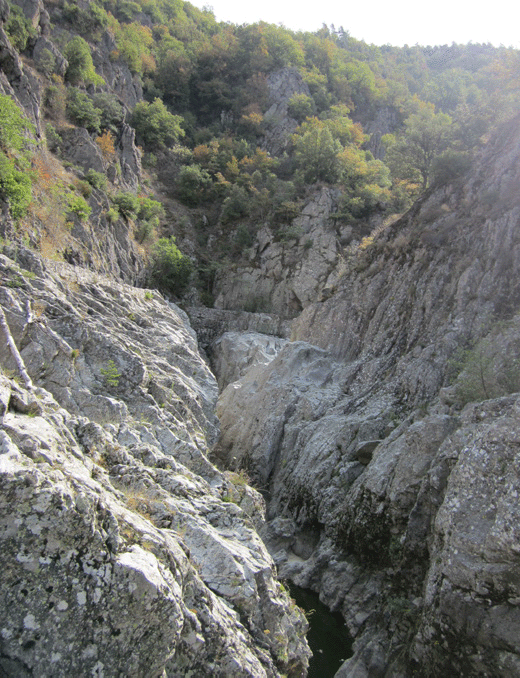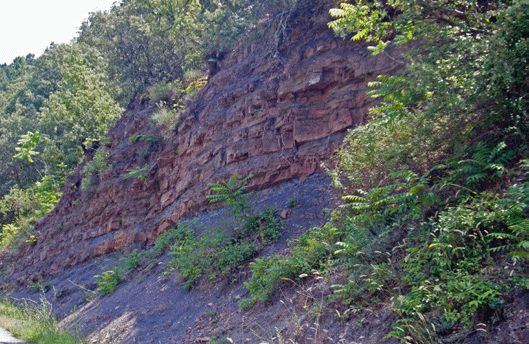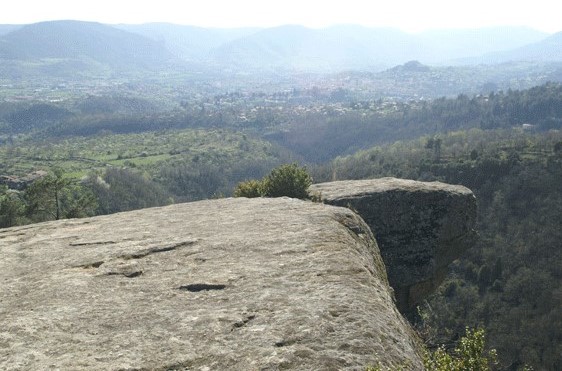In order to be able to situate themselves in time, geologists identify significant events on the Earth History. Eons are divided in Eras then in Periods, etc. The most famous are the last third eras : Paleozoic, Mesozoic and Cenozoic.

The Paleozoic era (540 à 252 M.y)
The Paleozoic era started with the Cambrian explosion and ended with the greatest crisis for living things that there has ever been.
The Paleozoic era in the Ardèche
Between 400 and 350 million years ago, the convergence of tectonic plates formed the Hercynian chain, comparable to the Himalayas. The plateaus accumulated carboniferous, and then Permian deposits, while a rapid rate of erosion occurred. In the Ardèche, the remains of this chain form the crystalline substratum (granite, gneiss etc). Some sedimentary outcrops are visible (coal, etc).



The Mesozoic era (252 à 65 M.y)
The Mesozoic era started 252 million years ago with the diversification of one group: the dinosaurs. It ended 65 million years ago. While larger dinosaurs may have disappeared, one group still remains: birds.
The Mesozoic era in the Ardèche
Sandstone fossils from the Triassic period are quite rare in Ardèche. Some outcrops, like in Payzac, show prints of small dinosaurs. Jurassic limestone and marlstone form large strata that can reach more than 100m in thickness. These deposits are easily visible in the Rhone valley. The cretaceous limestones from the Gorges of the Ardèche are ancient coral reefs.



The Cenozoic era (since 65 M.y)
65 million years ago, a crisis ended the domination of reptiles and ammonites and marked the beginning of the Cenozoic Era. One group began to dominate on land: Mammals.
The Cenozoic era in the Ardèche
At the beginning of the Cenozoic Era, the European plate subducted under the Adriatic microplate. The collision with the African plate caused the formation of multiple folds on the ocean floor: the Alps.
An important deformation of the primary rocks pushed up the Massif Central. Large fractures of the earth’s crust caused the volcanic eruption of the Sucs du Mézenc (12 million years ago) and the Massif du Coiron (8 million years ago).



Muséum de l’Ardèche
To find the sites representing the different geological times, click on our map here.